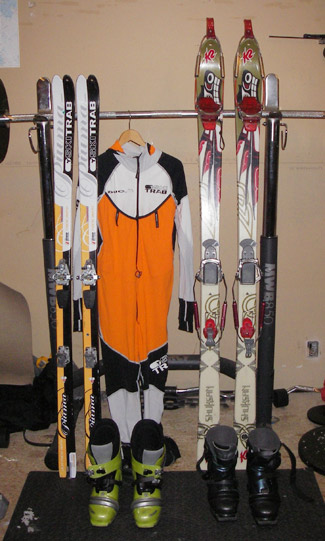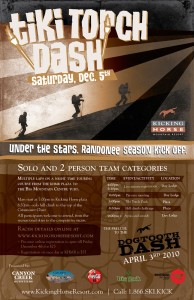Another round of the US skimo racing series was hosted on Saturday, January 23, 2010 at Whitefish ski resort. According to organizers, for the first time in the events history the weather didn’t stay true to its name. It was clear skies with a bit of cool temperatures but just enough to make for great racing conditions.
How it all went down
Canadians seeded the field with almost a full national team against two very strong home boys that are also members of the US national skimo team.
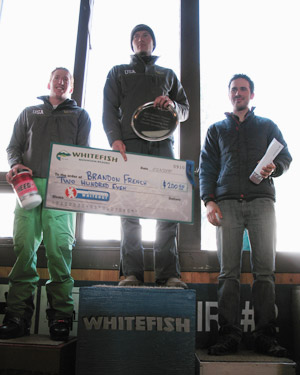
The race started fast since there was a $50 bonus for the fastest guy up the first hill.
The climb was 640m vertical, according to my watch, and Reiner Thoni from the Great White North took the prize with super speedy time of 26min 59sec.
Local racer, Brandon French, was right on his heels (27min 4sec) but could not answer the well timed attack.
In the process, Reiner set a new record for this climb which was previously held by Ben Parsons and was around 29min – an improvement of around two full minutes!
To cover 640 vertical metres in 27min translates into a vertical speed of 23.70 metres/minute or 1422 metres/hour! This is an amazing speed which is way greater than the speeds achieved at the Tiki Torch vertical race in earlier December 2009. And never mind that this was just a first climb of the race.
Both racers used two different but very light setups: Brandon – all new complete Dynafit DyNA setup, Reiner – Ski Trab WC skis with Scarpa F1 carbon boots.
The overall winner of the women’s race category, Canadian Melanie Bernier, was also the first girl to the top of the first climb with a very fast time of 33min 1sec which means a speed of 19.40 m/m or 1164 m/h. Like Brandon, Melanie also races the full DyNA setup.
On the second climb, Reiner had some skin problems and was passed by Brandon and another local Ben Parsons. This is also how they rounded the top three.
From start to finish, 4th placed was occupied by a Canadian team member James Minifie who was racing in a no mans land. He was always about 3-7min behind the top three and about 2-3min in front of a pair of another Canadians – Ian Gale and myself (finished 5th and 6th). Ian and I weren’t making up or loosing any ground on James after the first climb but we were consistently pulling away from a group of about 5 racers.
Wicked race course
The race course deserves two thumbs up as it was a true ski mountaineering course yet still managed within boundaries. This is a testament to the ski area’s great terrain.
I found the course very much to my liking with lots of technical skinning and skiing, and I mean there was lots of it.
The boot pack section was very nicely setup with good supportive steps and a very straightforward line between two rocks.
As for the marking, I was a bit afraid of what to expect based on hearing stories from the previous year. But the organizers really stepped up and I don’t think anyone had a slightest problem to follow the route.
Results and big checks
Inspired by golf tournaments the prize money were handed out on big cardboard checks that made the awards ceremony quite special to the non-involved public at the ski area’s base restaurant.
Below are just a brief results re-typed from the official ones I got from the race organizers. As soon as they appear in full length on the USSMA website I will link to them.
Men’s race AT:
1. Brandon French – 1:27:34
2. Ben Parsons – 1:29:39
3. Reiner Thoni – 1:30:48
Women’s race AT:
1. Melanie Bernier – 1:47:18
2. Billie Velisek – 2:10:43
3. Kylee Ohler – 2:17:00
Men’s race Tele:
1. Clint Muhlfeld – 1:50:00
Women’s race Tele:
1. Anne Walton – 3:19:05
Then there were also other categories and a race on a shorter course for those that wanted to try our sport for the first time and I would have to believe they got a great introduction on a great course while getting a light sun tan.
Thanks to everyone for racing and big thanks to organizers for putting together such a great event.


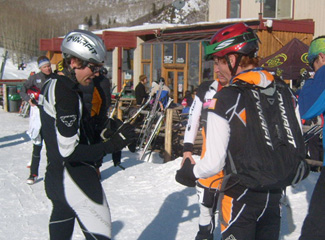
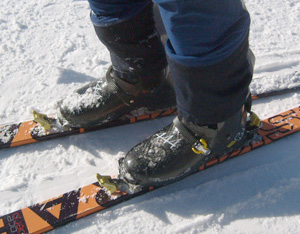

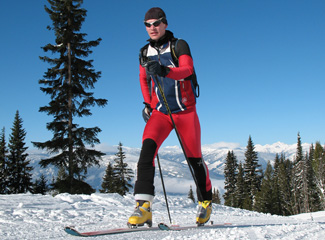
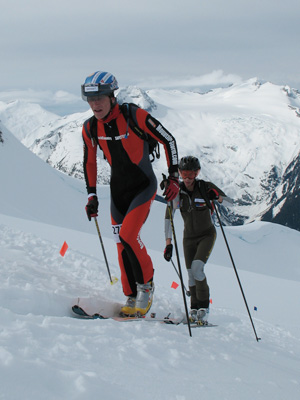
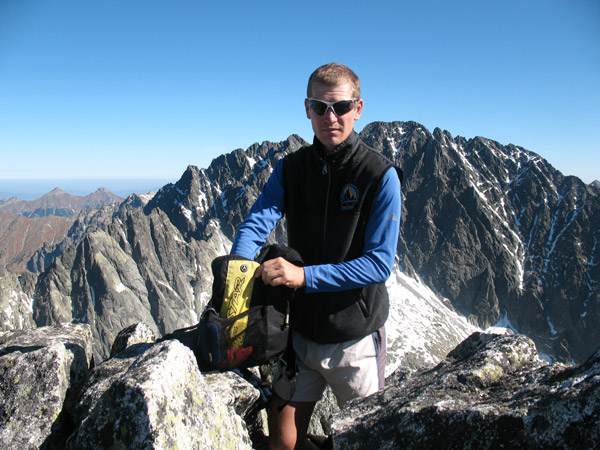
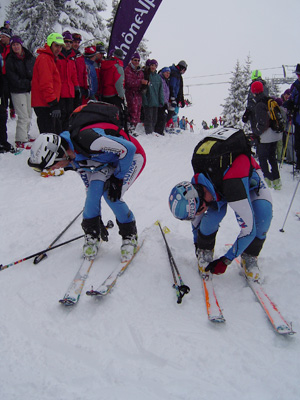
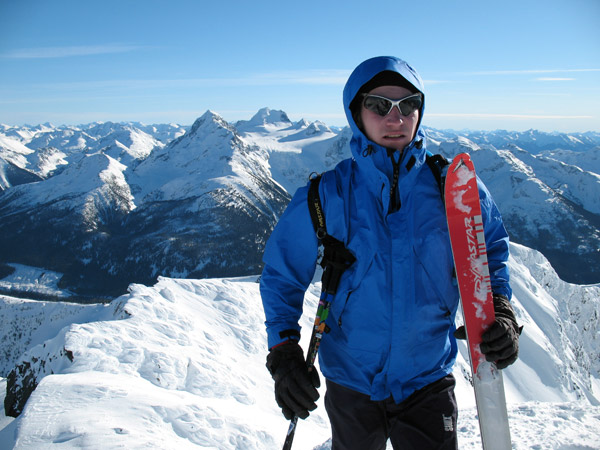

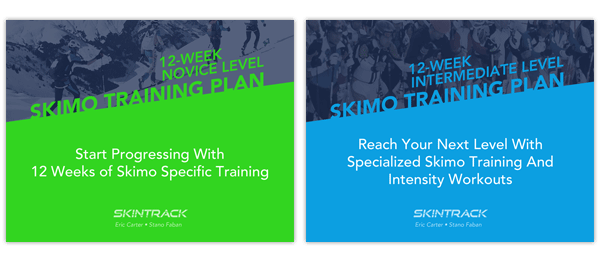
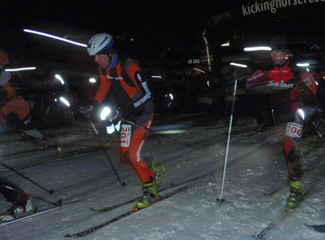
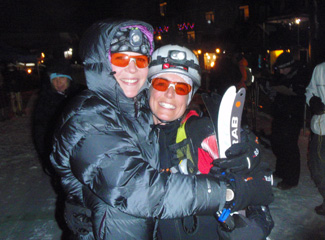
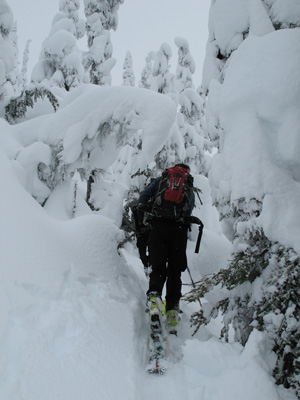 The first official training camp for Team Canada was in Canmore in mid-September, 2009. It was hosted by one of our Canadian skimo speedsters Steve Sellers. The aim was at getting to know each more and spending time training the engines.
The first official training camp for Team Canada was in Canmore in mid-September, 2009. It was hosted by one of our Canadian skimo speedsters Steve Sellers. The aim was at getting to know each more and spending time training the engines.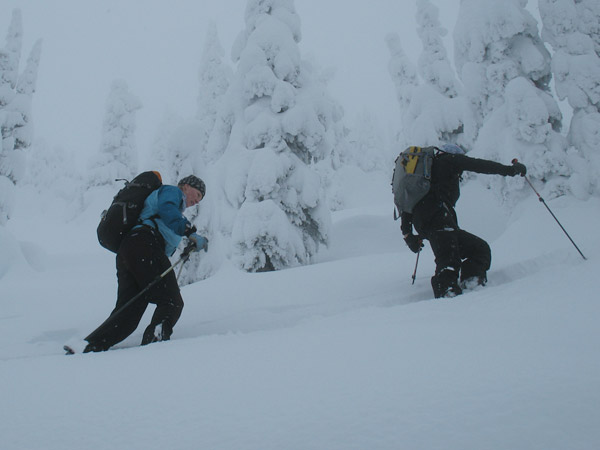

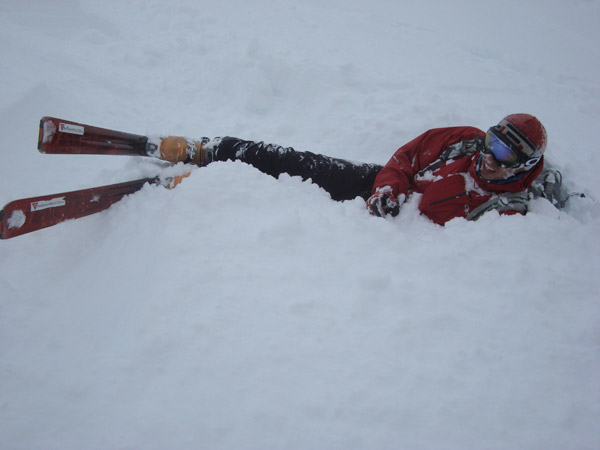

 You can challenge yourself many ways. For me, ski mountaineering racing is one of the ways I like to challenge myself during winter months.
You can challenge yourself many ways. For me, ski mountaineering racing is one of the ways I like to challenge myself during winter months.